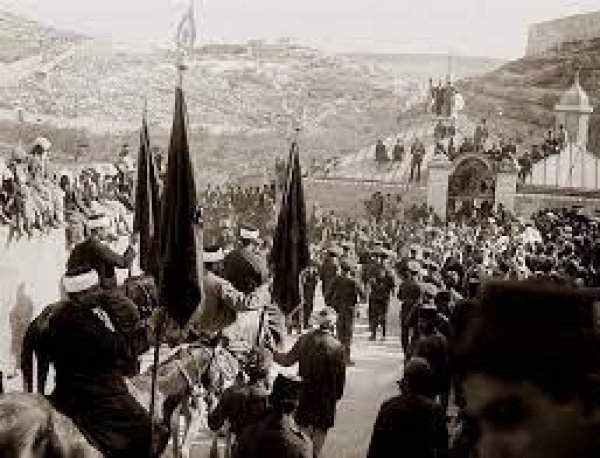
The tale of Palestinian struggle began early in 1920, with the first spark of Palestinian resistance ignited during the ‘season of Prophet Musa’. Palestinians gathered annually in the month of April to visit the shrine of Prophet Musa, and the celebration of this season continued for several days.
The beginning of the Prophet Musa Revolution.
In April 1920, the British occupation prevented the people of Hebron from entering Jerusalem to participate in the celebration of the season of Prophet Musa. The sons of Hebron forcibly entered Jerusalem, and the crowds, carrying the Palestinian flag, headed to the area near Hebron Gate.
Meanwhile, a Zionist infiltrated among the crowds and attempted to snatch and tear the flag. The men quickly attacked him and killed him. Another Zionist attempted the same and met a similar fate.
Following these events, Jewish youths and British soldiers attacked the celebrating Arabs, leading to a fierce battle. As a result, 9 Jews and British individuals were killed, and 250 were injured, while 4 Palestinians were martyred, and 21 were wounded.
The British government issued martial law rulings, imposed curfews, and suspended all newspapers. However, the revolutionary actions persisted until April 10, 1920, when British forces completely besieged the Holy City. The Mandatory authorities issued various sentences of imprisonment against 23 individuals for their involvement in the Jerusalem Revolution, including Aref al-Aref and Haj Amin al-Husseini. However, they managed to escape to Jordan. Additionally, British forces dismissed Musa Kazem al-Husseini, the father of the martyr Abdul Qader al-Husseini, from the presidency of the Jerusalem municipality.
The uprising during the season of Prophet Musa marked the prelude to subsequent events and protests, leading up to the major revolution of 1936. The Prophet Musa uprising was the first Palestinian revolution against British occupation.

Share your opinion